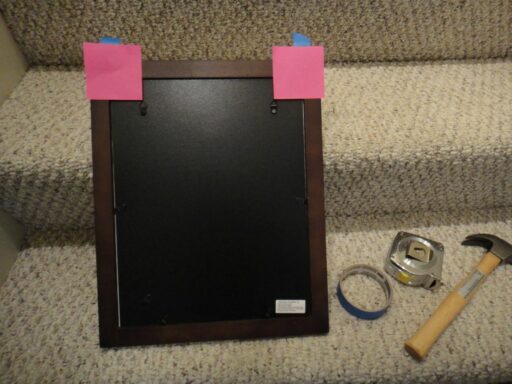In an industry where precision and professionalism are paramount, painting contractors are constantly seeking ways to enhance their efficiency and quality of work. ‘Maximizing Efficiency: Hiring Performance Painting Contractors for Quality Results’ is a comprehensive guide that delves into the strategies for assembling a high-performance team, improving customer satisfaction, adopting innovative business practices, optimizing sales and marketing efforts, and navigating the unique challenges and opportunities within the painting sector. This article is designed to equip painting contractors with the knowledge and tools necessary to stand out in a competitive market and ensure long-term success.
Key Takeaways
- Transitioning from subcontractors to full-time employees and implementing performance-based pay can significantly drive team efficiency and quality results.
- Understanding customer motivations, leveraging technology, and providing exceptional customer service are crucial for enhancing satisfaction and securing long-term success.
- Adopting scalable systems, differentiating through specialized skills, and staying informed about industry trends are key to maintaining a competitive edge.
- A strong online presence, targeted marketing, and accurate pricing strategies are essential for optimizing sales and gaining a competitive advantage in the market.
- Proactively managing leads, avoiding problematic projects, and exploring virtual sales avenues are important strategies for navigating the challenges in the painting industry.
Strategies for Building a High-Performance Painting Team

Transitioning from Subcontractors to Full-Time Employees
The shift from using subcontractors to hiring full-time employees marks a pivotal step in the evolution of a painting business. Full-time employees bring a level of commitment and scalability that subcontractors often cannot match. This transition involves a strategic approach to team building, where the focus shifts to long-term growth and stability.
- Define clear job roles and expectations to attract the right talent.
- Offer competitive benefits and a positive work culture to retain skilled painters.
- Invest in training and development to ensure high-quality workmanship.
By prioritizing the development of a dedicated team, businesses can enhance operational efficiency and foster a more professional work environment.
Balancing the workload becomes more manageable with a reliable team, and management can focus on strategic initiatives like marketing and service improvement. The journey from subcontracting to a structured employee model is a crucial step in establishing a thriving painting business.
Defining Roles and Selling the Benefits of Joining Your Team
In the competitive Phoenix’s commercial painting market, clearly defining roles within your painting team is crucial for operational efficiency and employee satisfaction. By delineating responsibilities, each team member can focus on their strengths, leading to higher quality work and faster project completion.
- Project Manager: Oversees the entire painting project, ensuring deadlines are met and quality standards are upheld.
- Lead Painter: Takes charge of the painting crew, providing guidance and ensuring that the team works cohesively.
- Painters: Execute the actual painting tasks, with attention to detail and adherence to safety protocols.
- Support Staff: Handles administrative duties, customer service, and assists with logistics.
Selling the benefits of joining your team involves highlighting opportunities for growth, the use of eco-friendly options and technology integration, and the promise of being part of a team that values quality and efficiency. Emphasize the strategic selection of contractors and the focus on long-term maintenance for optimal investment returns, which can be a strong selling point for potential employees.
By offering a clear path for advancement and a culture that rewards hard work, you can attract and retain top talent in the industry. This not only benefits your business but also contributes to a higher standard of service for your clients.
Implementing Performance-Based Pay to Drive Quality and Efficiency
In the quest for maximizing efficiency and quality in painting projects, implementing performance-based pay is a transformative strategy. This approach aligns the interests of the painters with those of the business, ensuring that every stroke of the brush is guided by a commitment to excellence.
Performance-based pay can be structured in various ways, but common elements include bonuses for early project completion, quality benchmarks, and customer satisfaction ratings. Here’s a simple breakdown of potential rewards:
- Completion Bonus: A set percentage added to the base pay for finishing before the deadline.
- Quality Bonus: Additional pay for meeting or exceeding quality standards.
- Customer Satisfaction: Incentives for positive customer feedback.
By tying compensation directly to performance metrics, painting contractors are motivated to not only work efficiently but also to uphold the highest standards of quality. This system promotes a culture of accountability and continuous improvement.
It’s essential to communicate the benefits of this pay structure clearly to your team. When they understand how their efforts translate into tangible rewards, you foster an environment where everyone strives for peak performance. This is not just about cost savings; it’s about building a team that takes pride in their work and is invested in the company’s success. The page provides guidance on project and service management, job preparation, client engagement, financial management, and quality control in painting contracting. It emphasizes systematic approaches for efficiency and quality workmanship.
Enhancing Customer Satisfaction for Long-Term Success

Understanding Customer Motivations and Tailoring Services
To achieve long-term success in the painting industry, it’s essential to grasp the underlying motivations of your customers. Understanding their unique needs and expectations is the first step in providing tailored services that resonate with them. For instance, some customers prioritize speed and efficiency, while others may value meticulous attention to detail or eco-friendly products.
- Recognize the need for personalized color consultations to add value.
- Invest in a robust follow-up system like DripJobs to maintain customer engagement.
- Differentiate your services by justifying your pricing through exceptional value.
By going above and beyond in understanding and meeting customer needs, you can foster loyalty and satisfaction that translates into repeat business and referrals.
It’s also crucial to prepare for fluctuations in business, such as slow periods in January, by setting the tone as a leader and continuously generating leads. This proactive approach ensures that your business maintains momentum and capitalizes on every opportunity for growth.
Leveraging Technology for a Virtual Office and Remote Management
In the dynamic world of painting contracting, leveraging technology for a virtual office and remote management is a game-changer. A web-based job management system is not just a trend; it’s a strategic move for businesses of all sizes. For small and medium-sized enterprises, such systems consolidate contact data, streamlining the identification of opportunities and enhancing project management efficiency.
Larger construction businesses benefit from online induction management tools, which automate the collection of critical documents and track their validity. This not only ensures compliance but also simplifies onboarding processes.
Embracing cloud-based technologies and mobile-friendly programs is essential for staying competitive. These tools offer a wide range of functionalities, including costing, quoting, and scheduling, which are crucial for efficient operations.
Integrating new technologies that sync with existing systems can significantly reduce manual data entry and errors. By capturing comprehensive data sets, from client details to invoices, contractors can make informed decisions and maintain a competitive edge in the industry.
Proactive Lead Follow-Up and Exceptional Customer Service
In the competitive painting industry, proactive lead follow-up is not just a best practice; it’s a necessity for thriving businesses. By consistently reaching out to potential clients and promptly addressing their inquiries, contractors can significantly increase their chances of securing projects. This approach to contractor’s project management involves coordination, follow-up, and relationship building for successful outcomes and customer satisfaction.
The key to long-term success lies in not only attracting leads but also in nurturing them. A lead that is well taken care of can become a loyal customer, contributing to the business’s growth and reputation.
To ensure that leads are managed effectively, consider the following steps:
- Establish a system for tracking leads and their status.
- Train your team on the importance of timely and personalized responses.
- Schedule regular follow-ups to keep your business top-of-mind.
- Use customer feedback to refine your services and enhance satisfaction.
By investing in these areas, painting contractors can build a strong foundation for customer loyalty and sustained business growth.
Innovative Business Practices in the Painting Industry

Adopting a Scalable System for Consistent and Profitable Results
In the pursuit of consistent and profitable results, painting contractors must focus on creating a scalable system that addresses both the immediate and future needs of the business. This involves a strategic approach to systemization, which includes the use of production rates to streamline operations and the implementation of software to enhance productivity.
- Determine the optimal crew size and calculate labor costs against revenue targets.
- Invest in marketing strategies like Google Ads and Facebook Ads to generate a steady flow of leads.
- Prioritize customer reviews to build trust and credibility, aiming to have the most reviews in your area.
By establishing a pricing system and utilizing tools like PaintScout, contractors can close deals more efficiently and provide accurate estimates, ensuring growth and profitability.
Building a reliable team is crucial, and this can be achieved by creating systems that make the business easier to manage. This not only helps in maximizing value for general contractors but also allows specialty contractors to target higher-margin services and streamline operations.
Differentiating Your Business with Specialized Skills and Equipment
In the competitive landscape of the painting industry, standing out is crucial. Specializing in niche services not only positions your business as an expert but also attracts a specific clientele seeking those unique offerings. For instance, mastering industrial painting techniques and safety protocols can set your business apart and justify a premium pricing model.
By investing in specialized skills and advanced equipment, you can deliver superior quality that exceeds the standard market offerings, fostering customer loyalty and enhancing your brand reputation.
Here are some key areas to focus on for differentiation:
- Mastery of safety procedures and protocols
- Acquisition of cutting-edge painting technology
- Training in specialized painting techniques
- Development of a unique service portfolio
Remember, differentiating your business is not just about the services you offer; it’s about the value you bring to your clients. Charge higher prices by providing exceptional craftsmanship and a customer experience that goes above and beyond.
Staying Ahead of Industry Trends with Continuous Learning and Adaptation
In the dynamic world of the painting industry, staying ahead of the curve is not just about keeping up with trends; it’s about anticipating them. Continuous learning and adaptation are the cornerstones of a business that thrives amidst change. By investing in educational resources and attending events like the PCA Expo, contractors can gain new insights and strategies that are crucial for growth.
The key to long-term success is a commitment to professionalizing the business and embracing a culture of improvement. This means not only refining painting techniques but also enhancing business acumen through better estimating, pricing, and sales skills.
A proactive approach to learning involves recognizing the need for change and seeking out opportunities to grow. This could include hiring a marketing company to implement effective strategies or investing in technology that streamlines operations. The table below outlines some of the actions that can help painting contractors stay relevant and competitive:
| Action Item | Description |
|---|---|
| Educational Investment | Attend industry events and invest in resources to gain knowledge. |
| Technology Adoption | Leverage tools for better project management and customer engagement. |
| Marketing Strategies | Develop an online presence and professional branding. |
| Business Acumen | Improve skills in estimating, pricing, and sales for profitability. |
By continuously learning and adapting, painting contractors can differentiate themselves with specialized skills and equipment, and provide exceptional craftsmanship that commands higher prices.
Optimizing Sales and Marketing for Competitive Advantage

Building an Online Presence and Professionalism to Win Bids
In today’s digital age, a contractor’s online presence and website quality are pivotal in securing new projects. A well-designed website serves as the cornerstone of your digital strategy, showcasing your portfolio and expertise to potential clients. It’s essential to focus on visual storytelling, ensuring that your site is not only visually appealing but also narratively compelling.
- Reassure your visitors with trust signals such as industry association badges, warranties, and client testimonials.
- Automate your proposal and follow-up process to stand out and close deals efficiently.
- Highlight your unique selling propositions, like specialized skills and equipment, to differentiate from competitors.
Emphasize the accessibility of information and customer engagement on your website to foster trust and drive sales.
Remember, your online visibility is a direct reflection of your business. By implementing these strategies, you can enhance your professionalism and increase your chances of winning bids.
Investing in Marketing to Maintain a Steady Pipeline of Work
In the competitive painting industry, investing in marketing is not just an option, but a necessity for contractors aiming to maintain a steady flow of projects. Digital marketing, in particular, offers cost-effective advertising options that allow businesses to optimize their budgets and reach a wider audience.
- Naming and Branding: Establishing a strong brand identity is the first step in attracting potential clients.
- Lead Nurturing: Consistent follow-up on leads can significantly increase conversion rates.
- Budgeting for Marketing: Allocating funds strategically ensures that marketing efforts are sustainable and effective.
- Sales and Estimating: Accurate job estimates and pricing strategies are crucial for closing deals and ensuring profitability.
By focusing on these core areas, painting contractors can create a robust marketing strategy that drives business growth and fosters customer loyalty. Balancing marketing investments with other business expenses, such as hiring skilled employees and purchasing quality equipment, is key to achieving long-term success.
Accurate Estimating and Pricing for Enhanced Profitability
Accurate estimating and pricing are the cornerstones of profitability in the painting industry. Time-based estimation, also known as ‘production rate estimation’, is a method that has been adapted to address the unique challenges faced by painting contractors. By leveraging estimating software tailored for the painting sector, contractors can deliver proposals and work orders that are not only impressive to clients but also ensure that the job is completed profitably.
To maintain a competitive edge, it’s essential to understand the common pitfalls in pricing. Here are the five biggest pricing mistakes to avoid:
- Underestimating the time required for preparation and cleanup
- Overlooking the costs of materials and supplies
- Failing to account for the complexity of the job
- Ignoring market rates and underpricing services
- Neglecting to include a reasonable profit margin
By learning how to properly price a job while maintaining a reasonable profit, contractors can unlock the secrets to construction quotes that win more work and enhance long-term success.
Ensuring clear communication and expectations with clients is crucial for successful project outcomes. This approach not only aligns with high-ROI renovation strategies, such as focusing on kitchen and bathroom remodels, but also maximizes home value for the client.
Navigating Challenges and Opportunities in the Painting Sector

Identifying and Avoiding Problematic Projects and Clients
In the competitive painting industry, identifying problematic projects and clients is crucial for maintaining a healthy business. It’s essential to learn to spot the early warning signs during initial conversations with potential clients. Here are some red flags to watch out for:
- Clients who are vague about project details or expectations
- Those who haggle excessively over price before work has begun
- Individuals who have a history of negative interactions with contractors
- Projects that do not align with your business’s core strengths and services
By being vigilant and recognizing these warning signs, you can steer clear of engagements that are more likely to result in disputes, financial loss, or damage to your reputation.
It’s also important to trust your instincts. If a project or client feels off, it may be worth passing on the opportunity. Remember, not all business is good business, and being selective can save you time and resources in the long run.
Balancing Workload with Strategic Hiring and Team Expansion
In the dynamic field of professional painting, balancing workload is crucial for maintaining a steady flow of projects without overburdening your team. To achieve this, it’s essential to start the hiring process early and vet applicants thoroughly, ensuring that you bring on board individuals who can uphold the quality and efficiency standards of your business.
- Vet applicants thoroughly to ensure quality hires.
- Determine crew size based on workload and business goals.
- Calculate labor costs and revenue targets for optimal team expansion.
By strategically expanding your team, you can inject momentum into your business while preparing for future growth. This approach not only helps in managing the current workload but also positions your company for scalability and long-term success.
Investing in a robust hiring system and creating a culture that fosters growth are key steps in attracting and retaining top talent. Consider the ‘pit crew mindset’ for effective delegation and trust in your team’s capabilities. Remember, a well-balanced team is not just about numbers; it’s about having the right people in the right roles, ready to take on the challenges and opportunities that come with a growing business.
Exploring the Future of Virtual Sales and Coaching in the Industry
The painting industry is on the cusp of a digital transformation, with virtual sales and coaching poised to redefine the traditional business model. As we’ve seen in other sectors, embracing online platforms for sales and training can lead to significant efficiency gains and cost savings.
- Virtual sales processes can streamline customer interactions, making it easier to showcase services and close deals without the need for in-person meetings.
- Virtual coaching allows for scalable training solutions, ensuring that painting professionals can enhance their skills from anywhere, at any time.
The integration of virtual elements into sales and coaching is not just a trend; it’s a strategic move towards a more agile and responsive business structure.
As the industry evolves, companies that leverage these tools will likely see an uptick in productivity and customer satisfaction. The table below outlines potential benefits of adopting virtual practices:
| Benefit | Description |
|---|---|
| Increased Reach | Access to a wider customer base without geographical constraints. |
| Cost Efficiency | Reduction in travel and physical training costs. |
| Flexibility | Ability to adapt quickly to market changes and customer needs. |
| Enhanced Learning | Continuous professional development through online resources. |
Conclusion
In summary, the journey to maximizing efficiency in a painting business is multifaceted, involving strategic hiring, training, and management of performance painting contractors. By building a dedicated team, focusing on customer satisfaction, and leveraging technology like PaintScout for quick, accurate estimates, businesses can stand out in a competitive market. Embracing a performance-based pay structure and a virtual office team can further enhance operational efficiency. As the industry evolves, staying ahead requires continuous learning, adapting to new trends, and providing exceptional craftsmanship. Ultimately, the key to quality results and business growth lies in understanding customer needs, differentiating your services, and consistently delivering on your promises.
Frequently Asked Questions
How can hiring full-time employees benefit my painting business over subcontractors?
Hiring full-time employees allows for greater scalability and control over your team, leading to more consistent quality and efficiency. It also fosters a more professional business environment and can incentivize employees through performance-based pay.
What are the key factors in enhancing customer satisfaction in the painting industry?
Understanding customer motivations, leveraging technology for better project management, and providing proactive lead follow-up and exceptional customer service are crucial for enhancing satisfaction and securing long-term success.
How can I differentiate my painting business in a competitive market?
Differentiate your business by adopting specialized skills, using advanced equipment, and staying ahead of industry trends. Offering exceptional craftsmanship and customer experience can also justify higher pricing and set you apart.
What role does technology play in managing a painting business?
Technology, such as virtual offices and estimating software like PaintScout, plays a vital role in remote management, providing accurate estimates quickly, and streamlining operations to close deals efficiently and grow the business.
Why is proactive lead follow-up important in the painting sector?
Proactive lead follow-up ensures that potential customers are engaged and informed, which increases the chances of closing deals. It also demonstrates commitment to customer service, which can lead to repeat business and referrals.
How can I ensure my estimates are both competitive and profitable?
Establish a time-based estimation system or use specialized software designed for the painting industry to provide consistent and profitable results. Accurate estimating ensures competitive pricing while maintaining profitability.





